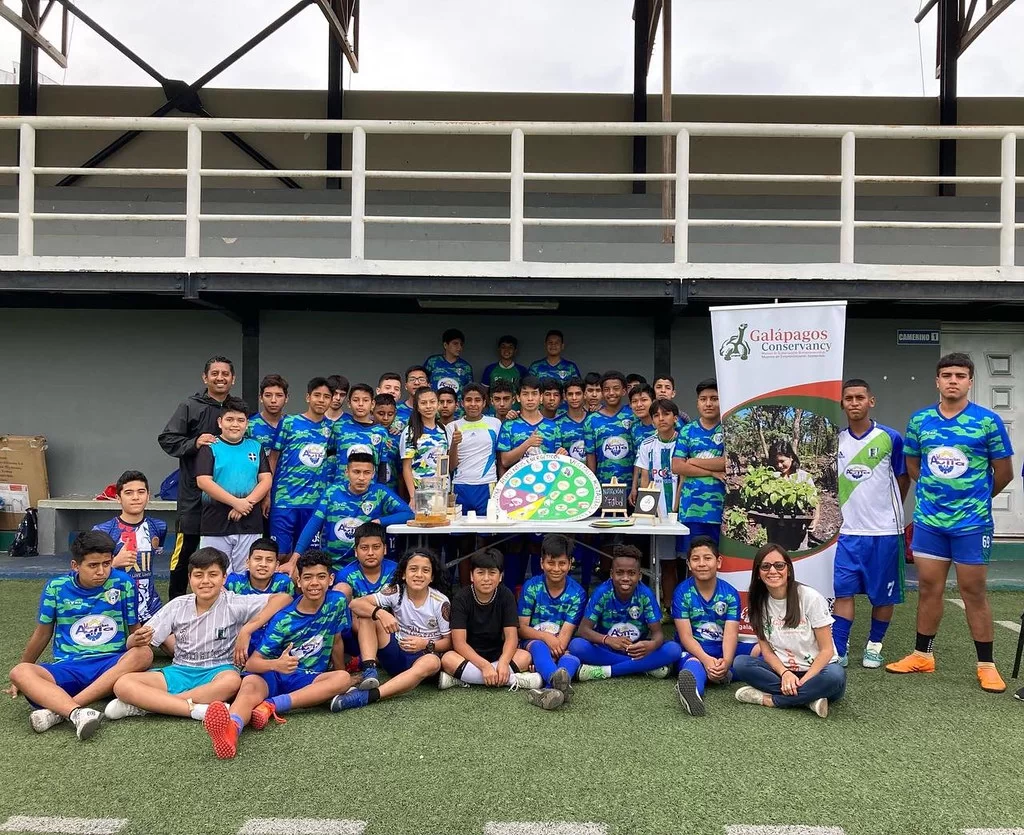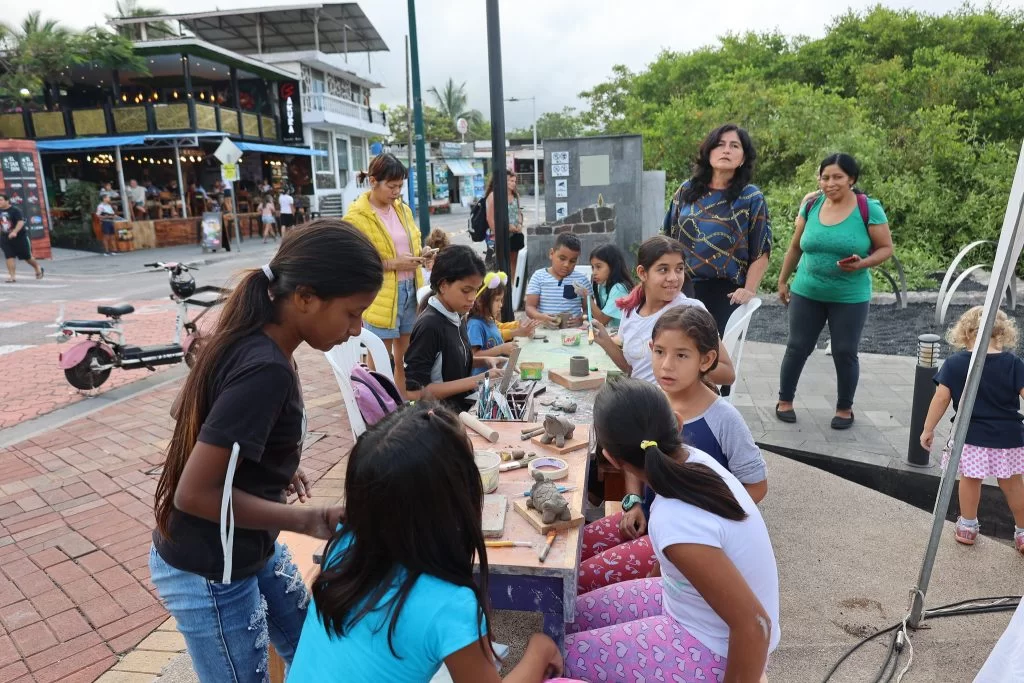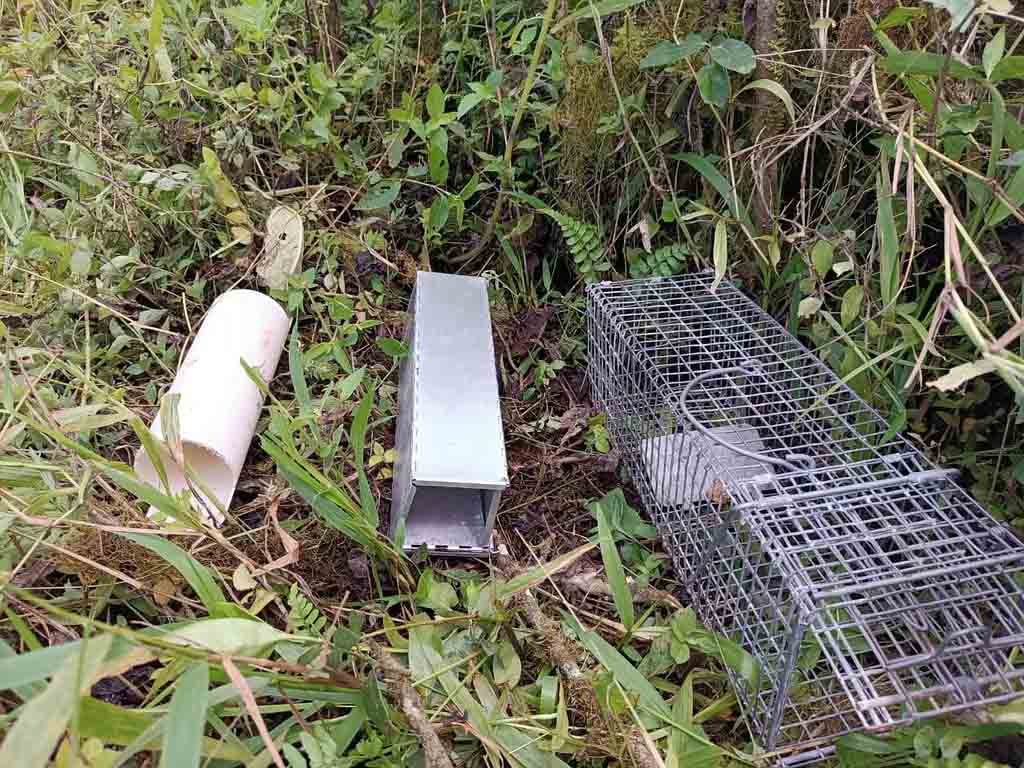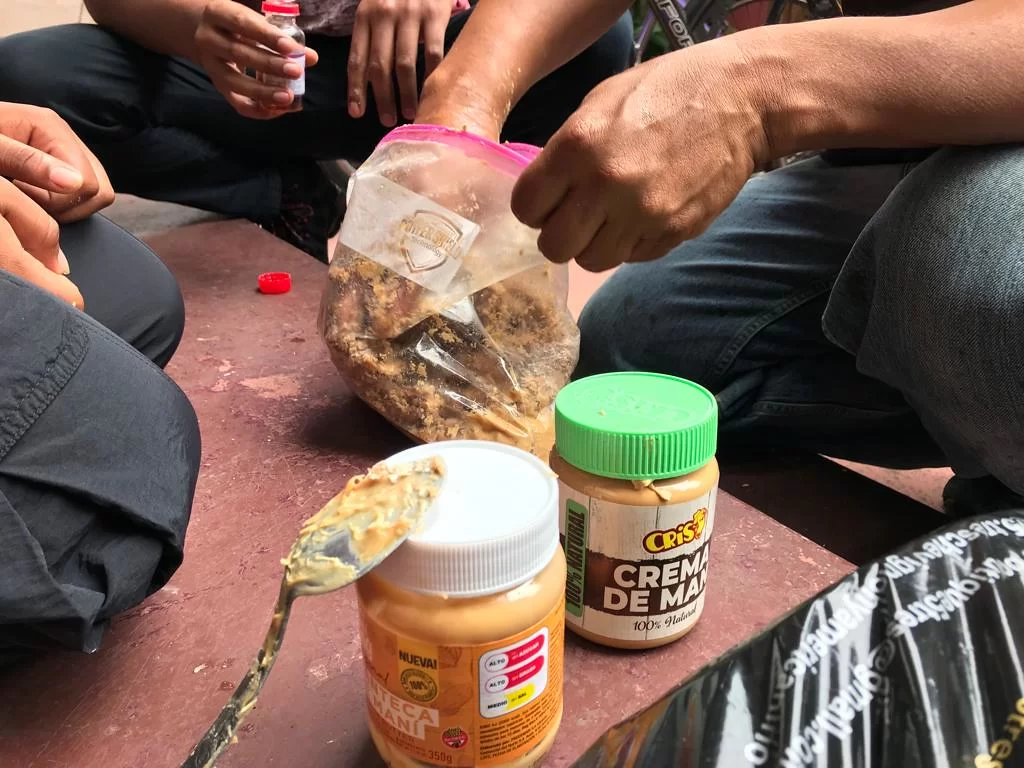Galapagos Conservancy funded a project to promote healthy eating habits led by Andrea Noboa, a Santa Cruz Island nutritionist. Andrea believes that “everyone is responsible for what happens in our bodies.” Therefore, it is important to understand the importance of changing eating habits and to promote healthy eating.
Up to ten nutrition workshops have been supported on Santa Cruz Island. Around 100 people attended these workshops, which promoted local food consumption, especially seasonal fruits and veggies. Andrea stressed that consuming local products has the primary environmental benefit of reducing foreign species entering Galapagos. She also highlighted the importance of reducing greenhouse gas emissions and energy use, as transportation from the mainland generates a lot of greenhouse gases.
Every day large amounts of edible food are wasted or lost, both in Galapagos and elsewhere. This contributes to climate change as well as increasing greenhouse gas emissions. Andrea discusses food waste in her workshops at home, in restaurants, and with farmers whose produce often ends in waste. Organic food is a way to reduce pollution and conserve water and energy.
Washington Tapia, the General Director of Galapagos Conservancy (and its affiliate Conservando Galapagos), believes that sustainably grown food is more nutritious, healthier and more beneficial to the Galapagos ecosystem. For increasing food security, nutrition, and hunger, it is important to reduce food waste and food loss.
Galapagos Conservancy is happy to support Andrea Noboa’s work to educate our community about interconnections between diet, health, as well as maintaining the integrity and diversity of our ecosystems.

Andrea Noboa teaching local Galapagueños about healthy habits © Andrea Noboa
Giovanna Morales is a Galapagos native who has been leading this project since March 2022 when she was awarded one of Galapagos Conservancy’s Women in Sustainability Entrepreneurship Grants. Giovanna was taught art by her grandmother as a child. Giovanna now passes on her passion for art to children as a way of inspiring them about the world around us. She uses sculpture, architecture and painting, engraving, and drawing.
Giovanna instilled a love for the environment in her children by creating a school that uses the arts to teach them how to preserve the environment. We were able to benefit 60 children from Santa Cruz Island aged 3-12 years old through this project. Each workshop lasted 60 hours. Giovanna said that 16 art exhibits were also held to display the work of the children.
Talks with experts were held about the Vermilion Flycatcher, which is a threatened species. Drawing and sculpture were used to explore the Vermilion flycatcher. Giovanna says that children can learn about nature through art, which allows them to observe, value and analyze it. This helps motivate them to protect it.” The children’s artwork now shows how important it is for Vermilion flycatcher protection.
It is well-known that students can benefit from artistic activities to enrich and enhance their learning experience and increase their cognitive, affective and psychomotor development.
It is easier to connect with nature and raise awareness about our ecosystems’ importance for our well-being. Galapagos Conservancy proudly supports Giovanna’s work to preserve the Galapagos Islands.

Local kids participating in art initiative led by Giovanna Morales © Galápagos Conservancy
There are three genera of rice rats from Galapagos: Nesoryzomys and Aegialomys. The latter is considered extinct. However, the Megaoryzomys evolved into 13 endemic species. Nine of these species are currently extinct and four are considered vulnerable (Weksler, Harris, and McDonald’s, 2007; Jimenez Uzcategui, et al. 2007). These species’ declines and extinctions are often due to the introduction exotic rodents (black rats, house mice), predators like the feral cats, diseases and climate change (Clark 1980, Harris, and McDonald’s 2007).
Johanna Castaneda set up sampling stations with Sherman and Tomahawk traps that were baited with peanut butter, oatmeal, and vanilla essence. She reported that most of the sampling was done in areas with prickly pear cacti. However, she also set up Santa Cruz Island sampling stations using Sherman traps and Tomahawk traps.

Rodent Traps © Johanna Castañeda
The research has shown that three introduced rodent species ( Rattus Rattus, Rattus Norvegicus, and Mus Musculus), coexist in Santa Cruz, San Cristobal. However, there is no evidence for the persistence of the endemic species.
Santiago Island’s endemic species are limited to the Prickly Pear and Palo Santo tree zones on the coast. (Harris 2006). The endemic species N., despite the presence of house mice and black rats, is not affected by them. The healthy body weight of swarthi was confirmed. The endemic species had a higher number of males than the introduced species. This could be due to N. Swarthi is more able to survive on the few resources available in their habitat during cold seasons.
Based on the data so far, it is recommended that Santa Cruz and San Cristobal have a more extensive survey. The N. It is also recommended that the swarthi population examines whether disease has been transmitted from introduced rodents. N. should be searched in greater depth. It is important to expand the search for N.
“This study is important because it redirects the attention to endemic rodents in Galapagos. They are an important group for maintaining balance in ecosystems. Johanna emphasized that Galapagos Conservancy is worthy of our gratitude for the trust we have placed in professionals in Galapagos to help us with this research on the endangered native rodents of the archipelago.”
Dr. Jorge Carrion is the Conservation Director at Galapagos Conservancy. He believes that research is an essential conservation tool. Having current information about Galapagos species status is vital for implementing management strategies. “That is why we are happy to support this type study conducted by Galapagos professionals,” said he.

Preparation of Rodent Food © Johanna Castañeda